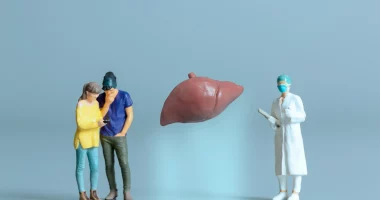Amenorrhea is when a woman does not have her period during the years she can have children, which is between menopause and puberty. This doesn’t mean she can’t get pregnant, but it could be a sign of a health issue.
Usually, girls start getting their periods around puberty. They then have a period about once a month until around age 50, when menopause starts, and periods stop for good.
Periods also stop during pregnancy and often during breastfeeding.
If a woman doesn’t get her period when she should, this is called amenorrhea.
Types of Amenorrhea
There are two main kinds of amenorrhea: primary and secondary.
Primary Amenorrhea
Primary amenorrhea is when a girl does not start her periods during puberty. As stated by the National Institutes of Health, if a girl hasn’t started her period by age 16, she should see a doctor. This condition is very rare, affecting less than 0.1% of people in the United States.
Secondary Amenorrhea
Secondary amenorrhea happens when a woman who has already started having periods stops getting them. It’s normal for periods to stop during pregnancy or breastfeeding, but if they stop for other reasons, it could indicate a problem. In the U.S., about 4% of women experience secondary amenorrhea at some point in their lives.
Missing one period isn’t usually a cause for concern, though many women might take a pregnancy test just to be sure. Doctors consider it secondary amenorrhea if:
- A woman who used to have regular menstrual cycles stops having them for 3 months.
- A woman who used to have irregular menstrual cycles stops having them for 6 months.
Causes of Amenorrhea
The causes of amenorrhea can be various for primary and secondary types.
Primary Amenorrhea
Primary amenorrhea happens when a girl doesn’t start her periods during puberty. A common reason for this is a family history of late menstruation. However, genetic issues can also cause primary amenorrhea.
Genetic conditions that can affect the ovaries and stop them from working properly include:
- Turner Syndrome: A condition where a female is partly or completely missing an X chromosome.
- Androgen Insensitivity Syndrome: A condition where the body can’t respond to male hormones (androgens), leading to higher testosterone levels.
- Müllerian Defects: Problems with the formation of reproductive organs like the uterus and fallopian tubes.
A Müllerian defect is a problem with the development of the reproductive organs. For example, the fallopian tubes and uterus might not form correctly. In some cases, the uterus and fallopian tubes may be missing or not fused together properly.
In a specific type of Müllerian defect called Müllerian agenesis or Mayer-Rokitansky-Küster-Hauser (MRKH) syndrome, the breasts, ovaries, and clitoris develop normally, but there is no opening of the vagina, and the uterus and cervix might not form correctly. Because of this, normal reproductive development doesn’t happen, and menstruation cannot be possible.
Secondary Amenorrhea
Menstruation can stop for various reasons, leading to what’s known as secondary amenorrhea.
- Gynecological Disorders and Illnesses: Several factors can contribute to secondary amenorrhea, including gynecological disorders and serious illnesses.
- Physical Stress and Low BMI: Physical stress, such as illness or rigorous exercise, and having a very low body mass index (BMI) can also trigger secondary amenorrhea. When BMI comes below 19, the chance of growing secondary amenorrhea significantly increases.
Stress, Weight Loss, and Exercise
Severe weight loss, often associated with eating disorders or physical illness, can lead to secondary amenorrhea. Intense exercise regimens, normal among professional ballet dancers, and competitive long-distance runners, can also cause it. Additionally, serious emotional upheaval or over stress can disrupt a woman’s menstrual cycle.
Medications
Certain medications, like progesterone-only contraceptives and various psychiatric drugs, may halt periods. Other medications that can affect menstruation involve antipsychotics, cancer antidepressants, chemotherapy drugs, blood pressure medications, and allergy medications.
Long-run Health Conditions
Secondary amenorrhea may also stem from underlying long-term health conditions, such as polycystic ovary syndrome (PCOS), premature ovarian failure, or issues with the pituitary or thyroid glands. An underactive thyroid or Pituitary problems can disrupt hormone balance, leading to menstrual irregularities. These glandular issues could be due to cancerous or benign tumors in the pituitary gland or dysfunction of the thyroid gland.
Symptoms
The important symptom of amenorrhea is not having your period.
But sometimes, depending on why it’s happening, other things might also show up.
These can include:
- Nipple discharge that’s milky.
- Losing hair more than usual.
- Getting headaches.
- Changes in how you see things.
- Growing extra facial hair.
For girls with primary amenorrhea, they might not develop breasts like they should.
If you notice any of these things happening to you, it’s important to talk to a doctor.
Diagnosis
Amenorrhea isn’t a sickness by itself; it’s a sign that something might be off. When you see a doctor about it, they’ll try to figure out why your period isn’t coming.
Primary Amenorrhea
If a girl hasn’t started her period by age 16, the doctor will want to know more. They might ask about her family and do some tests. These tests look at hormones like follicle stimulating hormone (FSH), thyroid stimulating hormone (TSH), and luteinizing hormone (LH). The doctor will also give her a check-up.
Secondary Amenorrhea
For women who have had periods but then they stop, the doctor will try to find out why. Before doing any tests, they might ask:
- When did you start getting your period?
- Are you sexually active?
- Could you be pregnant?
- Have you lost or gained weight lately? What’s your exercise routine like?
- How regular are your periods, and how heavy is the bleeding?
Then, based on what seems to be the cause, the doctor might suggest some tests. These could include pregnancy tests, thyroid function tests, tests to check how the ovaries are doing, and tests for other hormones.
Sometimes, imaging tests like MRI, CT scans, ultrasounds, or a hysteroscopy (where the doctor looks inside the uterus with a tiny camera) might be needed too.
Treatment
The treatment for amenorrhea varies depending on what’s causing it.
Primary Amenorrhea
For primary amenorrhea, the first step might be to wait and see, especially if the person is still young or if tests show their ovaries are working fine. Sometimes, if there’s a family history of late periods, things might sort themselves out with time. But if there are physical or genetic issues with the reproductive organs, surgery might be needed. However, even with surgery, there’s no guarantee that periods will become regular.
Secondary Amenorrhea
Treatment for secondary amenorrhea depends on why it’s happening.
- Lifestyle Changes: If excessive exercise is the cause, changing the workout routine or diet might help get the monthly cycle back on track.
- Stress Management: Counselling might be useful if mental or emotional stress is a factor.
- Weight Management: If the person has been losing weight rapidly, they might need a supervised plan to gain weight back safely. If an eating disorder is involved, treatment may include gaining weight under the supervision of a psychiatrist and nutritionist.
- Treating Underlying Conditions: Sometimes, health problems like an underactive thyroid can cause weight loss and stop periods. In such cases, the doctor may prescribe medication like thyroxine to balance the hormones.
- Dealing with PCOS: Treatment for polycystic ovary syndrome (PCOS) will depend on the individual case. If weight gain is a factor, a weight-loss plan might be recommended.
- Hormone Replacement Therapy: For premature ovarian failure, hormone replacement therapy (HRT) might help bring back menstruation.
- Managing Menopause: If menopause is the cause, treatment might involve managing symptoms and preventing complications like osteoporosis, especially if it starts early due to family history or other factors.
Takeaway
Sometimes, periods can stop happening, but it doesn’t always mean a person can’t have babies.
If your periods, which used to come regularly, stop for 3 months or more, or if you had irregular periods and they stop for at least 6 months, it’s a good idea to see a doctor.
The good news is that there are often ways to help with this. So, don’t hesitate to seek medical advice if you’re concerned about your periods.
Summary
In conclusion, amenorrhea, whether primary or secondary, can signal various underlying issues, from hormonal imbalances to lifestyle factors. Seeking medical advice is crucial if menstruation stops unexpectedly, as it could indicate a treatable condition. Treatment options vary depending on the cause, ranging from lifestyle adjustments to medical interventions like hormone therapy.
Regardless of the reason for amenorrhea, it’s essential to address it promptly to maintain overall health and fertility. Remember, regular check-ups and open communication with healthcare providers can lead to effective management and improved well-being. So, don’t hesitate to reach out for support and guidance if you have concerns about your menstrual health.
External Links








